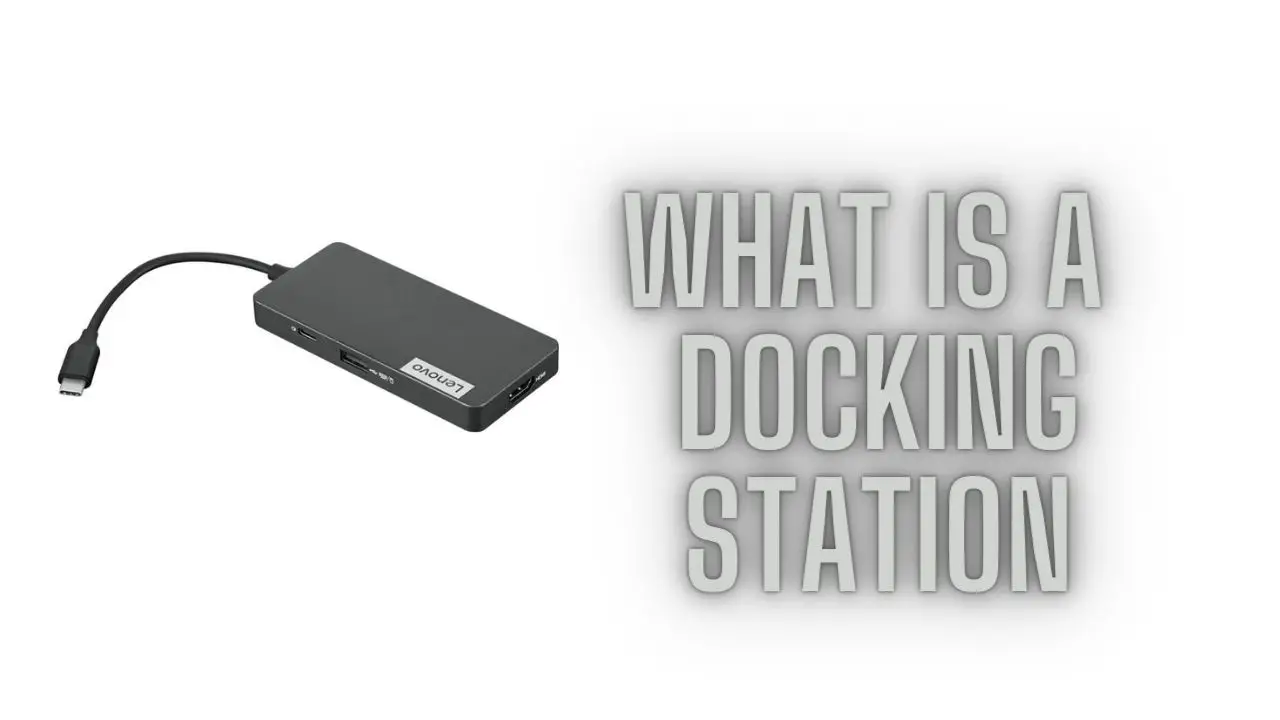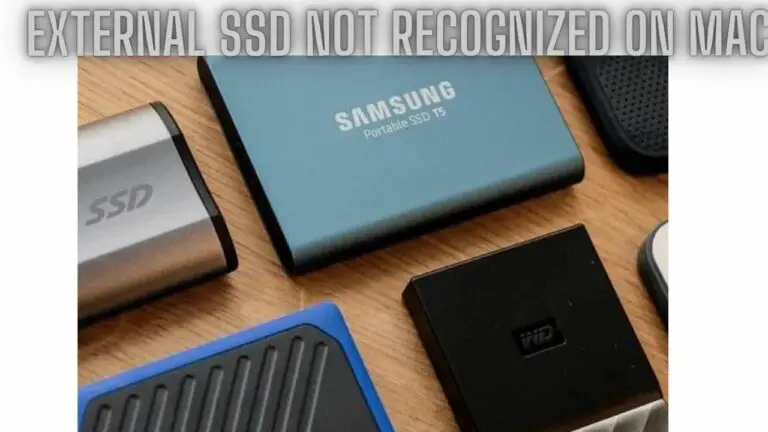What is a Docking Station: Enhancing Connectivity and Productivity
Introduction
A docking station is a versatile device that plays a pivotal role in enhancing connectivity and productivity for users of laptops, tablets, and other portable devices. Designed to simplify the process of connecting peripherals, external displays, and power sources, docking stations provide a centralized hub for various devices to work seamlessly together. In this article, we’ll delve into what a docking station is, how it works, and the benefits it offers.
Defining a Docking Station
A docking station, also referred to as a dock or port replicator, is a hardware device that serves as a bridge between a portable computer or device and a set of peripherals. These peripherals can include monitors, keyboards, mice, printers, external hard drives, audio devices, and more. Docking stations are commonly used with laptops and tablets, allowing users to transform their portable devices into more versatile and functional workstations.
How Docking Stations Work
Docking stations serve as convenient hubs for connecting various peripherals and devices to a laptop or desktop computer. They work by providing additional ports and connectivity options beyond what the computer itself offers. Here’s a breakdown of how docking stations typically work:
- Physical Connection: Docking stations typically connect to the computer via a single cable, usually a USB-C, Thunderbolt, or proprietary connection, depending on the docking station’s design and the computer’s compatibility. This cable serves as the primary data and power connection between the computer and the docking station.
- Port Expansion: Docking stations feature a variety of ports and interfaces, such as USB ports (Type-A and/or Type-C), HDMI, DisplayPort, Ethernet, audio jacks, and more. These ports allow users to connect external devices like monitors, keyboards, mice, printers, external storage drives, and networking equipment to their computer through the docking station.
- Data Transfer: When devices are connected to the docking station, data can flow between the computer and the peripherals through the docking station’s ports. For example, files can be transferred between external hard drives and the computer, or input devices like keyboards and mice can send data to the computer through the docking station.
- Power Delivery: Many modern docking stations also support power delivery to the connected laptop or device. This means that not only can data be transferred through the docking station, but it can also supply power to charge the laptop or device, reducing the need for multiple power adapters.
- Display Output: Docking stations often include video output ports like HDMI or DisplayPort, allowing users to connect external monitors. This feature enables users to expand their desktop workspace or mirror their computer’s display onto larger screens.
- Software Integration (Optional): Some docking stations come with companion software or drivers that may offer additional features or customization options. This software may facilitate functions like monitor arrangement, audio settings, or network configuration.
- Plug-and-Play: Docking stations are typically designed to be plug-and-play, meaning they can be connected and disconnected from the computer without needing to restart or reconfigure the system. This makes them convenient for users who frequently switch between mobile and desktop work environments.
Overall, docking stations simplify the process of connecting multiple peripherals to a computer, providing a centralized hub for data transfer, power delivery, and display output. They are particularly useful for users who require additional connectivity options or who frequently switch between different work setups.
Benefits of Using a Docking Station
Docking stations offer several benefits that can significantly enhance the user experience and improve productivity:
- Enhanced Connectivity: Docking stations provide a wide range of ports and connectors, reducing the need to constantly plug and unplug devices. This simplifies the process of connecting external peripherals and accessories.
- Expanded Display Options: Many docking stations support multiple displays, allowing users to extend their workspace and increase multitasking capabilities.
- Single Cable Connection: With a docking station, you can often connect all your peripherals with a single cable, reducing cable clutter and making setup and disconnection quicker.
- Charging and Power: Some docking stations provide power to the connected device, eliminating the need for separate power adapters and ensuring your device remains charged.
- Productivity Boost: Docking stations help transform portable devices into full-fledged workstations, making them suitable for tasks that require a larger display, comfortable keyboard, and precision mouse.
- Flexible Work Environments: Docking stations facilitate a seamless transition between mobile and stationary work environments, allowing users to maintain their preferences and settings regardless of the location.
- Reduced Wear and Tear: Frequent plugging and unplugging of peripherals can lead to wear and tear on a device’s ports. Docking stations minimize this wear by centralizing the connection points.
What is the Purpose of a Docking Station
The purpose of a docking station is to provide a centralized hub that enhances connectivity, convenience, and productivity for users of laptops, tablets, and other portable devices. Docking stations serve as a bridge between these portable devices and a wide range of peripherals and accessories, offering several key benefits:
1. Connectivity Enhancement: Docking stations expand the connectivity options of portable devices by offering various ports and connectors that may not be present on the device itself. These can include USB ports, Ethernet jacks, audio ports, HDMI or DisplayPort outputs, SD card slots, and more. This extended connectivity simplifies the process of connecting external devices and accessories.
2. Streamlined Workspace Setup: With a docking station, users can quickly set up a fully functional workstation by connecting a single cable from the device to the docking station. This eliminates the need to individually connect each peripheral and accessory, reducing cable clutter and saving time during setup.
3. Multi-Monitor Support: Many docking stations support multiple displays, allowing users to connect external monitors and extend their workspace. This is particularly beneficial for tasks that require multitasking or working with multiple applications simultaneously.
4. Charging and Power Delivery: Certain docking stations can provide power to the connected device, eliminating the need for separate chargers or power adapters. This ensures that the device remains charged and ready for use while connected to the docking station.
5. Seamless Transition: Docking stations enable users to seamlessly transition between a mobile and stationary work environment. When the portable device is connected to the docking station, the user gains access to a larger display, comfortable keyboard, and other peripherals that contribute to a more productive work experience.
6. Device Customization: Users can personalize their docking stations by connecting peripherals and accessories that best suit their work style. This could include external hard drives, printers, scanners, external keyboards, and more.
7. Wear and Tear Reduction: Constantly plugging and unplugging peripherals can lead to wear and tear on the device’s ports. Docking stations mitigate this issue by serving as a central connection point, preserving the device’s ports for longer use.
8. Flexibility and Mobility: Docking stations provide the flexibility to work in different environments while maintaining the same setup and preferences. Users can easily disconnect the device from the docking station and take it on the go.
9. Improved Ergonomics: Using a docking station allows users to position their portable devices at a comfortable viewing angle, potentially reducing strain on the neck, back, and wrists.
In essence, the purpose of a docking station is to transform portable devices into more versatile and functional workstations. By providing an array of connectivity options, simplifying setup, and enhancing productivity, docking stations have become essential tools for professionals and users seeking a seamless computing experience in various contexts.
Docking Station FAQS
What is a docking station?
A docking station is a device that provides additional ports and connectivity options for laptops and other portable devices. It allows you to easily connect peripherals like monitors, keyboards, mice, printers, and more, all through a single connection to your laptop.
What are the benefits of using a docking station?
Docking stations offer several benefits, including:
- Simplified cable management: You only need to connect one cable to your laptop for access to multiple peripherals.
- Improved productivity: Docking stations allow you to quickly switch between a mobile setup and a more desktop-like environment.
- Expanded connectivity: You can connect multiple monitors, USB devices, Ethernet cables, and other accessories simultaneously.
How do I connect my laptop to a docking station?
Typically, you’ll need to connect the docking station to your laptop using a compatible cable, such as USB-C, Thunderbolt, or proprietary connectors. Once connected, your laptop will recognize the docking station, and you can start using the connected peripherals.
Can I use a docking station with any laptop?
Docking station compatibility depends on the type of connections your laptop supports. Many modern laptops with USB-C or Thunderbolt ports can work with a wide range of docking stations. However, it’s essential to check the docking station’s specifications and your laptop’s compatibility before purchasing.
What peripherals can I connect to a docking station?
You can connect various peripherals to a docking station, including:
- Monitors or displays
- Keyboards and mice
- External hard drives or SSDs
- USB flash drives
- Printers and scanners
- Ethernet cables for wired internet connection
- Audio devices like speakers or headphones
Can docking stations charge my laptop?
Yes, many docking stations can charge your laptop while it’s connected. This is especially common with USB-C and Thunderbolt docking stations that provide power delivery capabilities. It’s crucial to ensure that the docking station’s power output is compatible with your laptop’s power requirements.
Are there different types of docking stations?
Yes, there are various types of docking stations, including:
- Basic docking stations: Provide essential ports like USB, HDMI, and Ethernet.
- Full-featured docking stations: Offer a broader range of ports and often support multiple monitors.
- Wireless docking stations: Connect to your laptop wirelessly, reducing cable clutter.
- Laptop-specific docking stations: Some manufacturers offer proprietary docking stations designed specifically for their laptops.
Do I need drivers to use a docking station?
Most modern operating systems automatically recognize and install drivers for common docking stations. However, it’s a good idea to check the manufacturer’s website for any specific drivers or software that might enhance your docking station’s functionality.
Can I use docking stations with tablets or smartphones?
Some docking stations are compatible with tablets and smartphones that support the required connections (like USB-C or Thunderbolt). They can provide similar benefits, such as connecting to external displays and peripherals, depending on the device’s capabilities.
How do I choose the right docking station for my needs?
Consider factors like the ports you need, the number of monitors you want to connect, power delivery capabilities, and compatibility with your laptop or device. Reading reviews and checking compatibility lists can help you make an informed decision.
Conclusion
In a world where portability and connectivity are crucial, docking stations bridge the gap between the convenience of portable devices and the functionality of full-sized workstations. By simplifying the process of connecting peripherals, external displays, and power sources, docking stations enhance productivity and provide users with a more versatile and seamless computing experience. Whether you’re a professional seeking to maximize efficiency or a casual user looking for a more streamlined setup, a docking station can be an invaluable addition to your tech arsenal.







